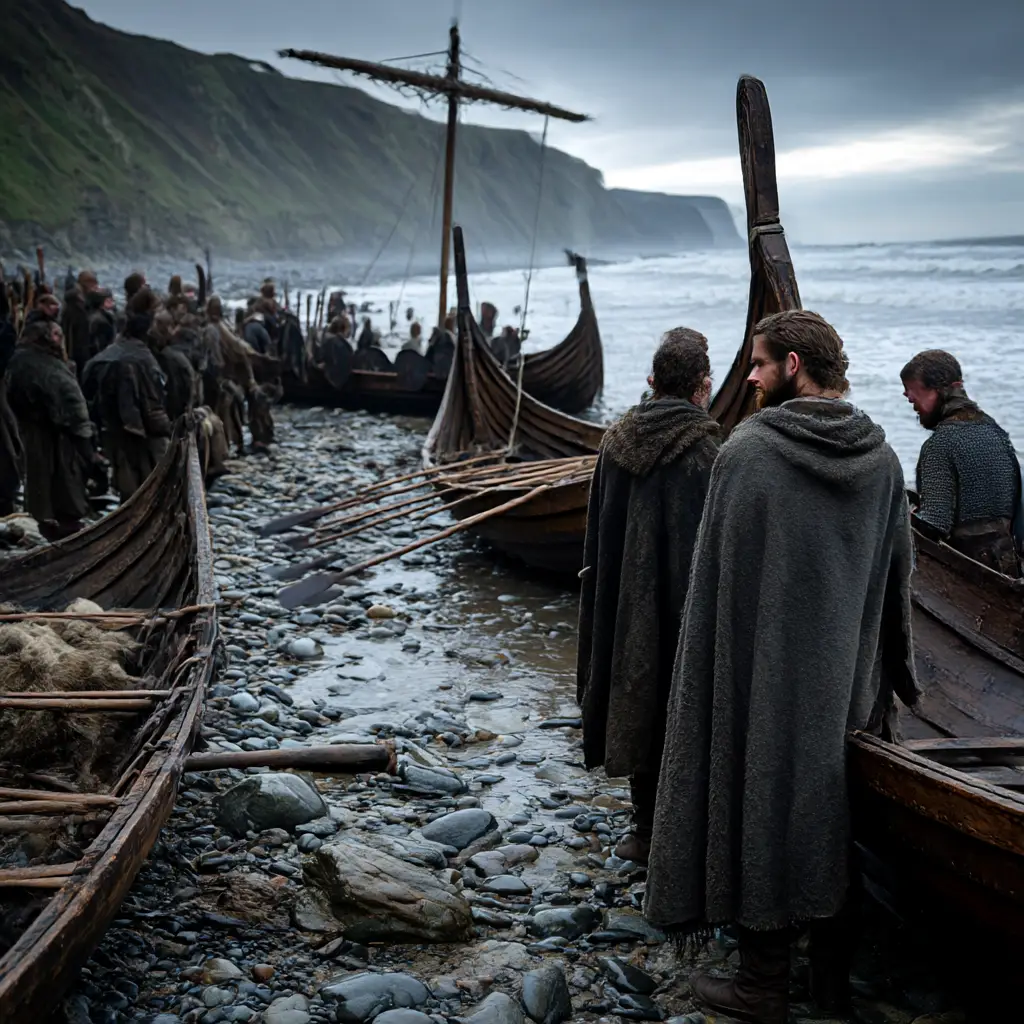What Was the Danelaw?
The Danelaw refers to the part of England that was under the control and influence of Danish Vikings between the late 9th and mid-11th centuries. It covered much of northern and eastern England and was shaped by distinct legal, cultural, and political systems introduced by the Scandinavian settlers.
Historical Background
The Danelaw emerged after decades of Viking raids across the British Isles. In 878 AD, following years of conflict, King Alfred the Great of Wessex and the Viking leader Guthrum agreed to the Treaty of Wedmore. This formalised a division of territory: Wessex and southern England remained under Anglo-Saxon control, while the north and east became a Viking-ruled area we now call the Danelaw.
Geographic Area
The Danelaw stretched across a wide swathe of England, roughly covering:
- Northumbria (modern Yorkshire and parts of North East England)
- East Anglia (including Norfolk and Suffolk)
- Five Boroughs of the Midlands: Derby, Leicester, Lincoln, Nottingham, and Stamford
Major Viking settlements like York (Jorvik) became economic and political centres within the Danelaw.
Legal and Cultural Influence
One of the defining features of the Danelaw was its distinct legal system:
- It operated under Danish laws and customs, different from the Anglo-Saxon laws to the south.
- Land ownership, inheritance, and trade were influenced by Scandinavian practices.
- The introduction of thing assemblies (local meetings to settle disputes) reflected Viking traditions.
Culturally, the Danelaw left a lasting mark on:
- Place names ending in “-by” (village), “-thorpe” (farm), and “-thwaite” (clearing), common across the region.
- Language, as many Old Norse words blended into Old English.
- Farming and craftsmanship, with Vikings contributing new tools and techniques.
End of the Danelaw
The Danelaw gradually eroded during the 10th century as Anglo-Saxon kings, especially Edward the Elder and Athelstan, reconquered Viking-held lands. However, Viking influence resurfaced during later waves of invasion, particularly under King Sweyn Forkbeard and King Cnut of Denmark. By the mid-11th century, the Danelaw as a distinct political entity had effectively disappeared, though its cultural impact endured.
The Danelaw shaped the development of medieval England:
It created a more unified English kingdom by encouraging both conflict and cooperation between Anglo-Saxons and Vikings.
It left a deep imprint on English law, language, and identity.
Modern archaeological discoveries continue to shed light on the life and culture of this fascinating period.



